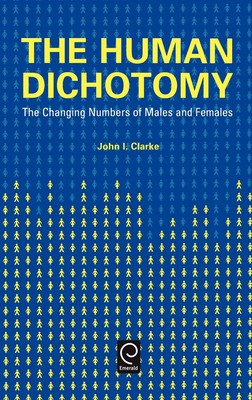
- We will send in 10–14 business days.
- Author: John Innes Clarke
- Publisher: Pergamon
- ISBN-10: 0080437826
- ISBN-13: 9780080437828
- Format: 15.6 x 23.4 x 1.1 cm, kieti viršeliai
- Language: English
- SAVE -10% with code: EXTRA
Reviews
Description
In "The Human Dichotomy", John Clarke discusses how the ratio between the numbers of males and females will change in the future. Scientific and technological advances, accompanied by social and economic change, are affecting the number of births, the number of deaths and the mobility of the two sexes, with the prospect of further dramatic changes in store. What impact will this have on the amount of women and girls world-wide? Will changes in the ratio of male to female births mean that the traditional son preference will begin to break down? Professor Clarke looks at how medical interventions and the looming prospect of sex selection at birth will affect the rough balances in the numbers of men and women. As well as these so-called 'natural' changes, the numerical balances of the two sexes in most parts of the world is being greatly transformed by a revolution in female mobility. How 'natural' changes in population and increased mobility in the 21st century will affect the geographical distribution in the numerical balance of the sexes is a key theme of this book. Addressing a significant gap in the literature, "The Human Dichotomy" provides case studies from across the world on the problems associated with the changing balances of births, deaths and mobility of the two sexes. The issues discussed include patterns of sex ratios, sex-selective abortions, sex-differential mortality in more developed and less developed countries, marriage and widowhood, and gendered migration.
EXTRA 10 % discount with code: EXTRA
The promotion ends in 21d.16:34:09
The discount code is valid when purchasing from 10 €. Discounts do not stack.
- Author: John Innes Clarke
- Publisher: Pergamon
- ISBN-10: 0080437826
- ISBN-13: 9780080437828
- Format: 15.6 x 23.4 x 1.1 cm, kieti viršeliai
- Language: English English
In "The Human Dichotomy", John Clarke discusses how the ratio between the numbers of males and females will change in the future. Scientific and technological advances, accompanied by social and economic change, are affecting the number of births, the number of deaths and the mobility of the two sexes, with the prospect of further dramatic changes in store. What impact will this have on the amount of women and girls world-wide? Will changes in the ratio of male to female births mean that the traditional son preference will begin to break down? Professor Clarke looks at how medical interventions and the looming prospect of sex selection at birth will affect the rough balances in the numbers of men and women. As well as these so-called 'natural' changes, the numerical balances of the two sexes in most parts of the world is being greatly transformed by a revolution in female mobility. How 'natural' changes in population and increased mobility in the 21st century will affect the geographical distribution in the numerical balance of the sexes is a key theme of this book. Addressing a significant gap in the literature, "The Human Dichotomy" provides case studies from across the world on the problems associated with the changing balances of births, deaths and mobility of the two sexes. The issues discussed include patterns of sex ratios, sex-selective abortions, sex-differential mortality in more developed and less developed countries, marriage and widowhood, and gendered migration.


Reviews